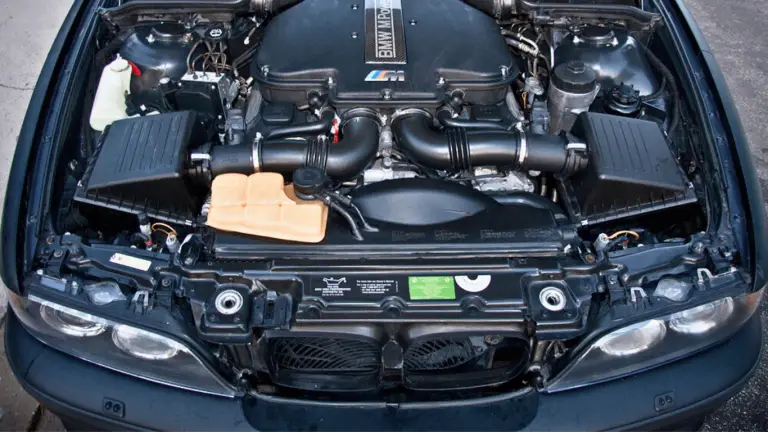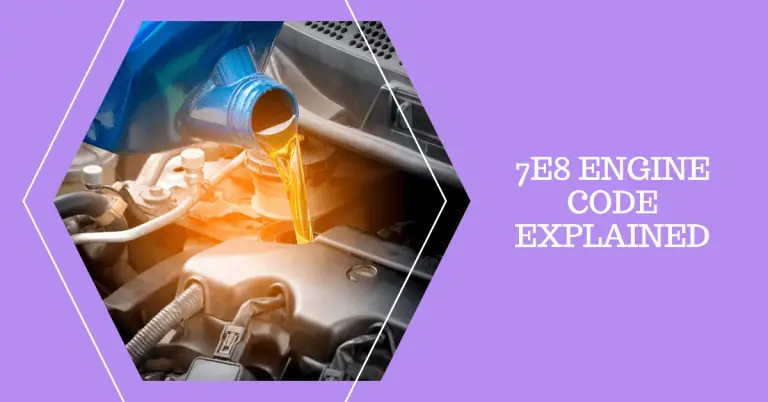BMW 3100 Code: Understanding the Diagnostic Trouble Code
Have you suddenly seen a mysterious “3100” code appear on your BMW’s instrument panel? That cryptic sequence of numbers is alerting you to an engine issue. Specifically, BMW’s onboard diagnostics system is reporting a problem with the air/fuel mixture being too lean.
What exactly does the 3100 code mean for your BMW, and how can you go about diagnosing and repairing the issue?
The 3100 diagnostic trouble code points to an overly lean air/fuel ratio due to more air and not enough fuel entering the engine. By learning what causes this DTC, how to diagnose it, repair options, and steps to prevent future occurrences, you’ll be well equipped to take action. This detailed guide has everything BMW owners need to know about tackling the frustrating 3100 code.
Overview of BMW Diagnostic Trouble Codes
Before diving into the specifics of 3100, let’s briefly discuss how BMW trouble codes work in general. OBD-II (On-Board Diagnostics) became the standardized system for engine self-diagnostics across all vehicles sold in the US after 1996.
This regulation mandated a common DTC system comprising a five-digit alphanumeric sequence. The first letter or digit indicates the general component category, while the following digits provide a more specific description of the detected issue.
For BMW vehicles, trouble codes take the form of a single letter followed by four numbers (like P1234). The letter “P” signifies a powertrain-related fault, “C” is for chassis, and “B” indicates body.
So in the case of 3100, we know it’s a powertrain or engine issue BMW’s computer has identified. The four digits then give details about the particular problem – too much air in the fuel mixture.
Armed with that basic understanding of BMW trouble codes, let’s explore the 3100 DTC more deeply.
What is the BMW 3100 Code?
The BMW service manual provides this definition for the 3100 diagnostic trouble code:
“Air/fuel metering system too lean.”
Essentially, this means the computer has detected too much air and not enough fuel entering the engine, resulting in an overly lean air/fuel ratio.
This ratio needs to be within a certain range (ideally around 14.7:1) for proper combustion. Too much air causes misfiring, power loss, hesitation under acceleration, reduced fuel economy, and eventually damage if the lean condition persists.
On 1996 and newer BMW models, the oxygen sensors monitor the exhaust and provide feedback to the Digital Motor Electronics system if they detect excessive leanness. This triggers the 3100 code.
Certain causes are more common when it comes to rich air fuel conditions:
- Vacuum leaks – Cracked hoses or leaking gaskets allow unmetered air to enter after the mass airflow sensor, leading to a lean reading.
- Faulty mass air flow (MAF) sensor – Responsible for measuring incoming air, a contaminated or failed MAF can incorrectly report low air flow.
- Weak fuel pump – Insufficient fuel pressure results in not enough fuel being injected to match the air.
- Clogged fuel filter – Obstructed filter reduces fuel volume entering system.
- Faulty oxygen sensors – Bad sensors will give inaccurate readings to the DME leading to improper adaptations.
Those are the most common causes, but there are additional possibilities we’ll explore later when discussing diagnosing the 3100 code. First, let’s go over how you’ll know when this DTC is active.
Symptoms of the BMW 3100 Code:
The 3100 code itself will illuminate your check engine light and show up through BMW’s built-in diagnostics. But there are also some common driveability issues that occur:
- Difficulty starting
- Stalling, rough idle
- Loss of power under acceleration
- Reduced fuel efficiency
- Misfiring or backfiring
- Engine knocking or pinging
You may notice the engine hesitates or feels like it’s being held back when you push the accelerator. This makes sense since an overly lean mixture results in weak combustion.
Depending on the severity, you may pick up on these symptoms right away, or they may slowly develop over time. Upon seeing the check engine light, always scan for codes right away to identify the issue before it worsens.
Now let’s go through the optimal process for diagnosing the 3100 trouble code.
How to Diagnose the BMW 3100 Lean Air/Fuel Code?
When that dreaded check engine light sparks up, grab your scan tool and look for any logged DTCs. If 3100 is present, you can dive right into diagnosing the root cause. Follow this systematic process for testing and confirming the issue:
Step 1 – Scan Tool Data
Before any hands-on testing, connect your scanner and look for clues in the live data. Pay attention to:
- Short and long term fuel trim levels – If positive numbers, the DME is adding more fuel to compensate for leanness. Values above 10% indicate issues.
- O2 sensor readings – Should constantly fluctuate between rich and lean. Slow response times or fixed readings point to problems.
- Mass air flow sensor grams/second – Abnormally low airflow reported may wrongly indicate less fuel needed.
Look for anything that supports the diagnosis of an overly lean fuel mixture. The scan tool data provides non-mechanical direction to focus your testing.
Step 2 – Visual Inspection
Now it’s time to get hands-on with visual inspections to check for vacuum leaks and damaged components. Here are the key areas to examine closely:
- All vacuum hoses – Scan along the length of every hose for cracks, brittleness, splits. Also check ends to ensure tight fit.
- Intake manifold – Remove and check for any warping or damage that could allow unmetered air in.
- Intake gaskets – Look for signs of leaks with spray cleaner or propane over gasket surfaces while the engine is running.
- MAF sensor – Check for dirt buildup on sensor elements that could impede operation.
Step 3 – Fuel Pressure Test
Use a fuel pressure gauge to test if the pump is delivering adequate pressure. Consult specs, but around 40-55 psi is often the target range. A weak pump unable to maintain pressure under load can trigger a lean condition.
Step 4 – Vacuum Leak Detection
If no obvious leaks found visually, use a smoke machine to pressurize the intake and look for any smoke emerging. Moving engine parts can open leaks not detectable through visible inspection. This tool pinpoints tiny leaks.
Following that testing process will help you narrow down if issues like leaks, sensor faults, or fuel delivery problems are the root cause of the overly lean air/fuel mixture. Next we’ll discuss how to fix the problem.
How to Fix the BMW 3100 Lean Air/Fuel Ratio Code?
Once you’ve diagnosed the specific reason for the excessive leanness, you can take action to correct it:
- Replace damaged vacuum hoses – Ensure you select high quality hose material designed to withstand engine temps and conditions. Also, secure firmly over fittings.
- Replace leaking gaskets – Whether intake or valve cover, replace gaskets to provide a positive seal if they appear worn/compressed. Use OEM spec parts.
- Clean or replace MAF sensor – Gently clean the wire filament inside the sensor housing with electronics cleaner spray to remove contaminants. If damaged, replace the entire MAF assembly.
- Replace clogged fuel filter – Simple maintenance item that should be replaced per the maintenance schedule or if flow testing confirms reduced pressure.
- Repair or replace weak fuel pump – If the pump is weak or damaged, you may need to replace it to restore full fuel pressure delivery. OEM pumps are recommended for reliability.
- Swap out faulty oxygen sensors – Upstream O2 sensors play a critical role in monitoring AFR. Replace perennial faulty ones.
Those cover the likely repair needs to address the root problems causing error code 3100 in your BMW. While individual parts often are not too costly, repair bills can add up if multiple components require replacement.
How to Prevent Future BMW 3100 Code Occurrences?
Making some proactive maintenance and inspection adjustments can help minimize future lean air/fuel situations:
- Use quality components – Don’t skimp on cheap hoses or gaskets prone to cracking and leaks. Invest in OEM or high performance parts built to last.
- Inspect vacuum lines – Periodically look over all vacuum hoses for condition. Replace any that appear worn – don’t wait for complete failure.
- Change fuel filters proactively – Don’t stretch filter change intervals too long. Keep them within manufacturer specifications for flow.
- Clean MAF sensor – Every 1-2 years remove and spray the MAF wire element to prevent contamination buildup.
- Check trouble codes intermittently – Scan for codes every few months so you can address any pending issues before they worsen.
- Practice good driving habits – Aggressive acceleration and revving when engine is cold contributes to oxygen sensor faults. Gentle driving prevents issues.
Combining quality parts, preventative maintenance, and smart driving will all help reduce the chances of seeing that check engine light and 3100 code again in the future.
FAQs About the BMW 3100 Trouble Code:
Is it safe to drive with the 3100 code?
In most cases yes, but take caution. You may notice reduced power under acceleration as the engine cuts back fueling for self-protection. Avoid aggressive driving. The longer you operate highly lean however, the greater the risk of eventual engine damage from excessive heat and combustion chamber stress. Have it diagnosed ASAP.
How much does it cost to fix code 3100 problems?
Costs vary dramatically based on cause. A simple vacuum hose replacement could be $100-200 in labor, whereas a fuel pump or an entire intake manifold gasket replacement could run $500-800+. Factor in the cost of any parts needing replacement as well.
Should I erase the code without fixing the underlying problem?
Absolutely not. Clearing DTCs without resolving the root issue will cause the code to continually reappear. And ignoring it risks escalating damage. Only erase codes after confirming the problem has been properly repaired.
Conclusion
Seeing an unfamiliar BMW trouble code like 3100 can be worrying. But arming yourself with knowledge of what it signals and how to address it head on is empowering. Rather than panic, view it as an opportunity to proactively maintain and optimize your vehicle. This guide provided a comprehensive deep dive on diagnosing, repairing, and preventing lean air/fuel conditions. With the right process, you can confidently tackle a 3100 code and keep your BMW running smoothly for the long haul.







